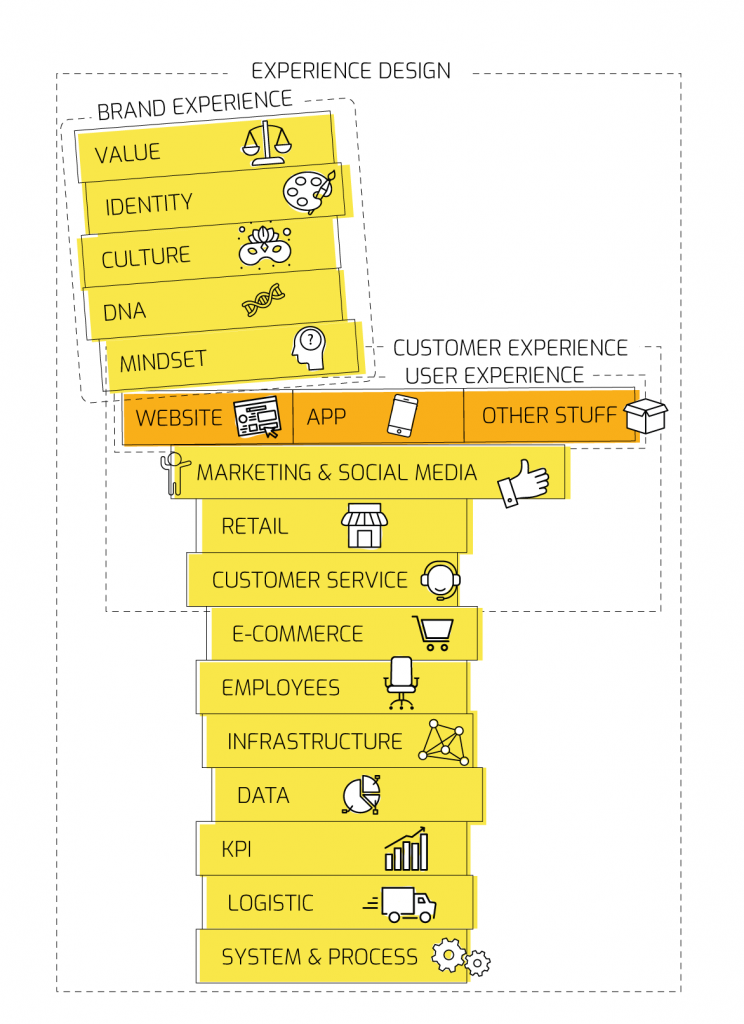The brand is also user experience
October 16, 2021
Elena Venieri

We are all familiar with branding because it is a concept that has been in place since people started buying and trading goods, but do we know it in its more modern meaning, which has evolved in the digital age?
Once upon a time, the brand was how the company showed itself. Today, in the digital age, where users can access and interact with thousands of pieces of information, the brand is how the consumer perceives it.

Nielsen Norman Group explains that the brand consists of 3 areas:
- Visual field. Visual elements cover the graphic elements used to communicate the brand, including the logo, typeface, images and other elements of a common style guide.
- Tone. Tone is the communication style used by the brand, from the text on a website to the messaging developed and used in targeted advertisements and the way staff speak to customers.
- Behaviour. Behaviour represents how the company acts in certain situations. Does the company reflect the morals and values of its customers? In the past, the focus was on non-interactive media such as press and TV, where brand behaviour was displayed. However, in the digital age, brand behaviour is primarily the interaction between the user and the brand itself. Simply put, when a customer visits a website, they interact with the brand and the way the product/service behaves towards the user will influence the perception of the brand.
As all brands now have a digital presence, customers now have a lot of interactive experiences with all categories of companies, regardless of sector. Therefore, user experience becomes a key factor in brand perception. As good as McDonald’s fries are, would I go back and buy them if it was constantly impossible to communicate with the McDrive operator because the intercom system doesn’t work?
Today, customers interact with brand representation in the form of websites, applications, web software and other interactive services, making behaviour a crucial brand attribute. We always talk about behaviour as a brand attribute whether it is expressed at the level of entire processes and interactions on a site, or at a finer level of those interactions (e.g. transitions, animations).
So for most people, the user experience becomes the brand differentiator, that extra something that leads the user to perceive the brand attributes.

Let’s try an example. Polimedics Medical Clinic in our city has a brand that wants to convey professionalism, trust and efficiency. It obviously has its own website and decides to expand it by providing an additional online booking service for specialist appointments. The user who uses this service can book a specialist appointment in three clicks, without having to spend 10 minutes on the phone in a waiting list talking to the call centre. They will think of a simple, efficient and punctual service. The final perception of the user after this experience will automatically relate the benefits of the service to the brand. Therefore, the perception of the outpatient clinic will be something like “an easily accessible medical clinic” in the eyes of this consumer/user. It is the UX of your product/service that creates a perception of your brand.
As proof of this, in a study published in CHI 2016, UX consultant Peter Tolstrup Aagesen and interaction design researcher Clint Heyer showed that there is a very close correlation between the interactions a user makes in the digital product experience and their impact on emotions and brand perception.
So let’s care about the user experience too if we want to increase our brand awareness.